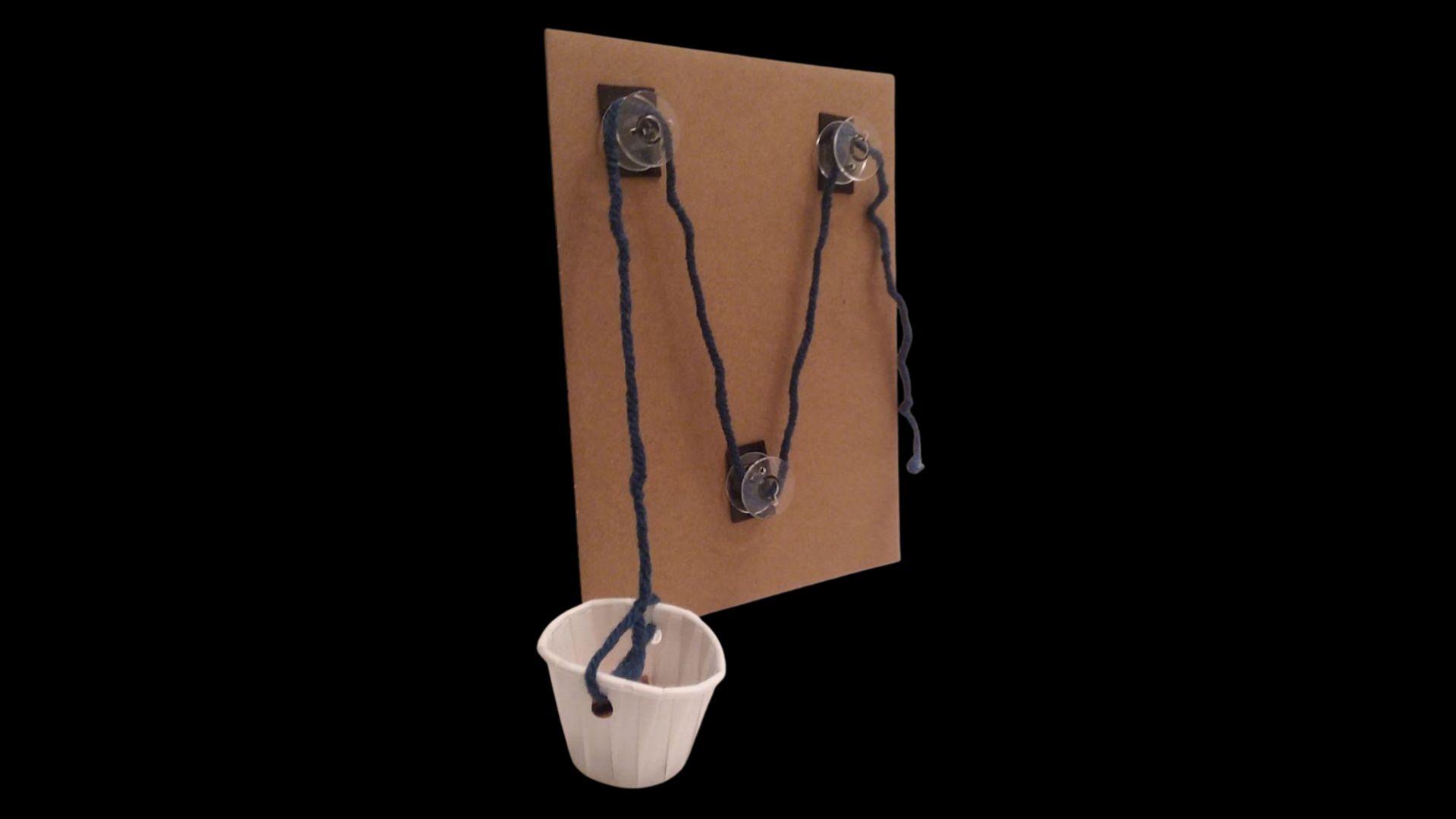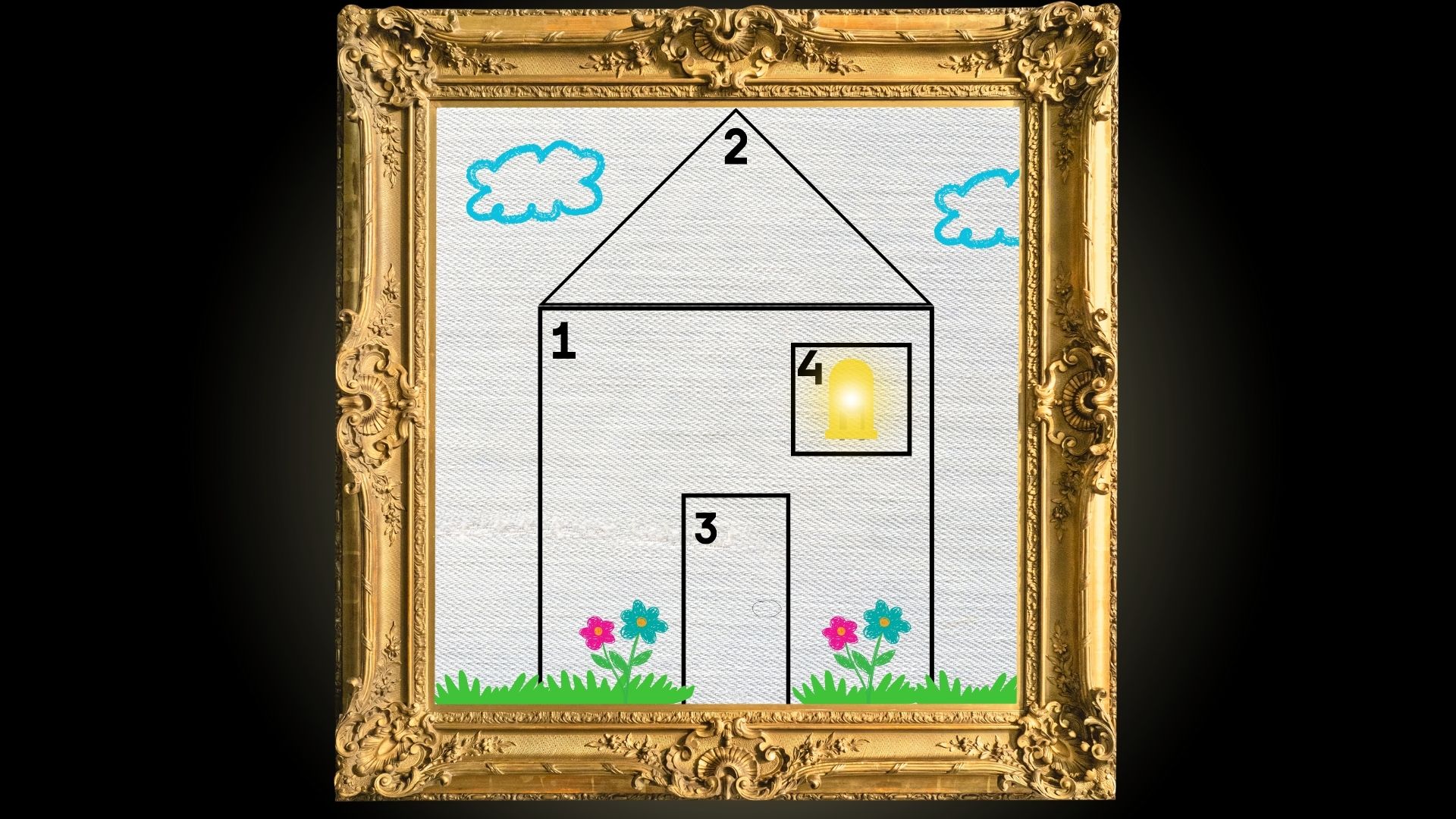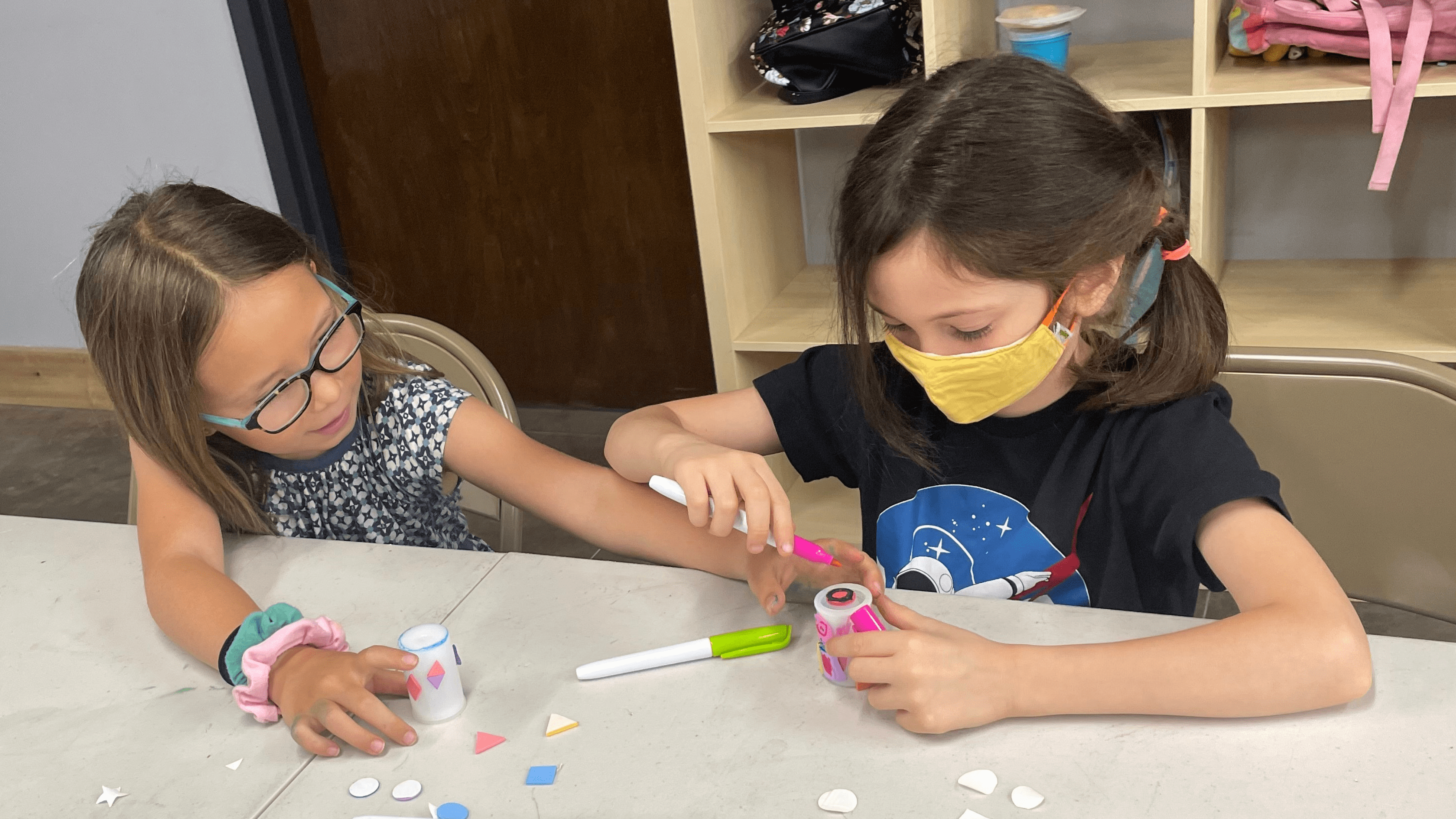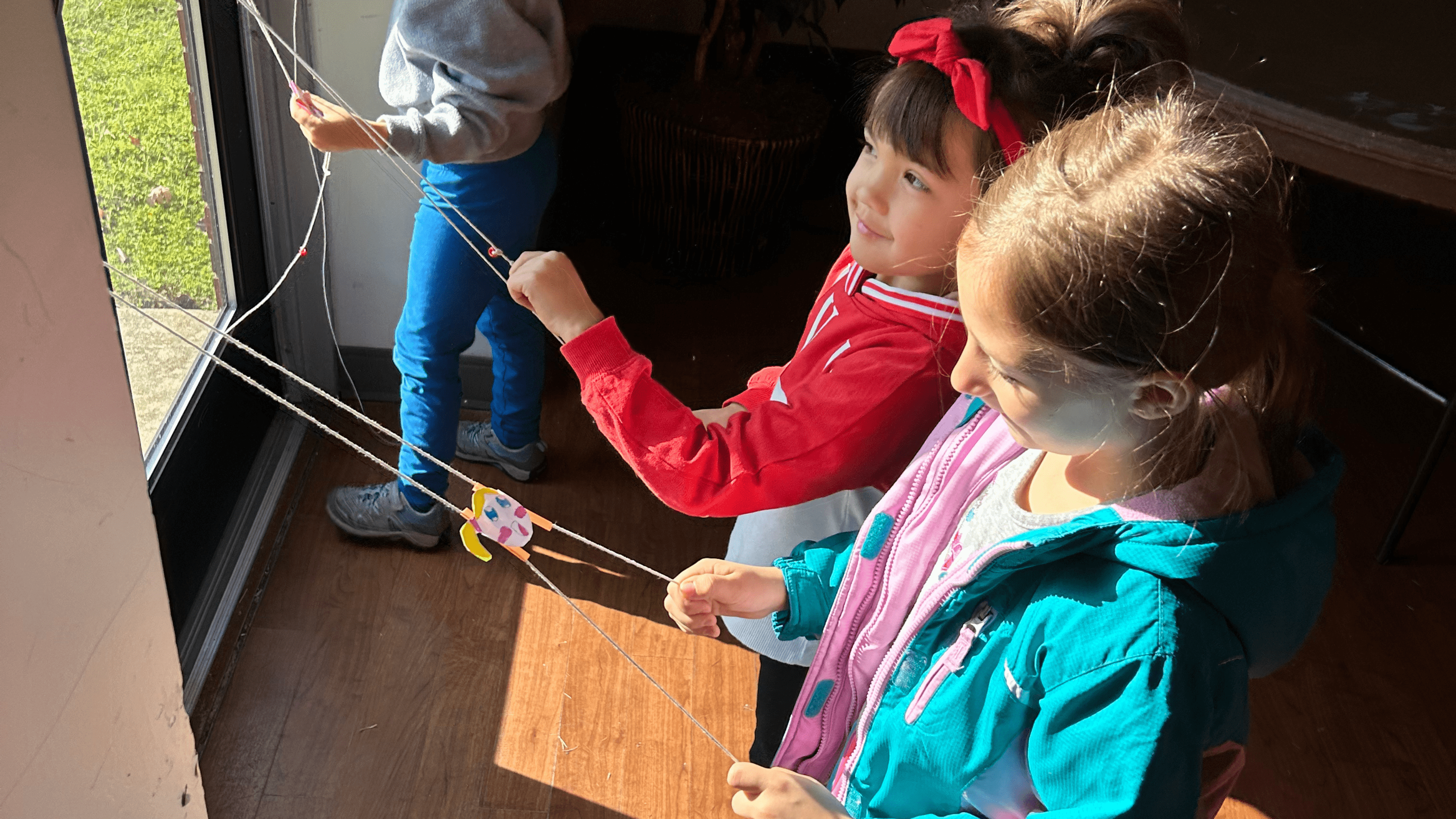Simple machines make up almost all mechanical systems. They make tasks easier, because the effort is spread over a longer distance – that way less force needs to be applied by you! Pulleys are a kind of simple machine that can be found in systems like elevators, drawbridges, and construction cranes.
In this project created by Emma, a member of the Rosie Innovators STEM program for young women in high school, you’ll be building your own pulley system to lift pennies. When pulleys have more fulcrums, or points where the string turns, it is easier to lift things. Other levers also have fulcrums, like the point where the board balances on seesaws! It would be very difficult to lift someone on the opposite end of a long board, but by placing a fulcrum in the middle, it is easy to make them go up and down.
Ready to make this project at home or in your classroom? Gather the materials listed at the right, and follow the instructions below!




